746 killed~200 wounded2 LSTs sunk2 LSTs damaged none Result German victory | Start date 1944 | |
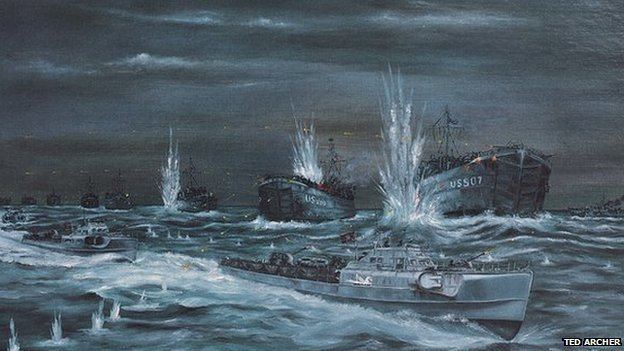 | ||
Similar World War II, Operation Fortitude, Battle of Cherbourg, Operation Tractable, Operation Charnwood | ||
Operation exercise tiger the war a nebraska story
Exercise Tiger, or Operation Tiger, was the code name for one in a series of large-scale rehearsals for the D-Day invasion of Normandy, which took place in April 1944 on Slapton Sands in Devon. Coordination and communication problems resulted in friendly fire deaths during the exercise, and an Allied convoy positioning itself for the landing was attacked by E-boats of Nazi Germany's Kriegsmarine, resulting in the deaths of at least 749 American servicemen. Because of the impending invasion of Normandy, the incident was under the strictest secrecy at the time and was only nominally reported afterward.
Contents
- Operation exercise tiger the war a nebraska story
- Exercise tiger video trailer ceevisk 2015
- Landing operations
- Friendly fire incident
- Battle of Lyme Bay
- Casualties
- Aftermath
- Memorials
- References
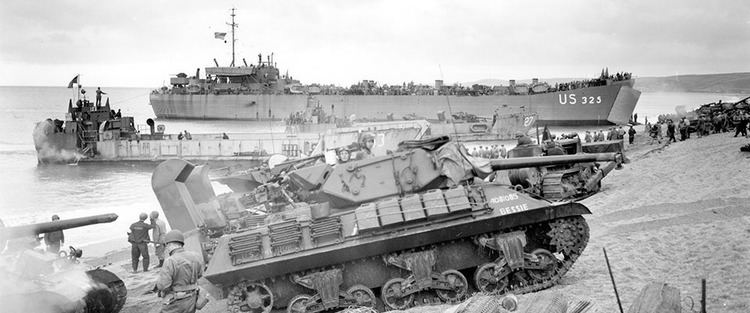
Exercise tiger video trailer ceevisk 2015
Landing operations
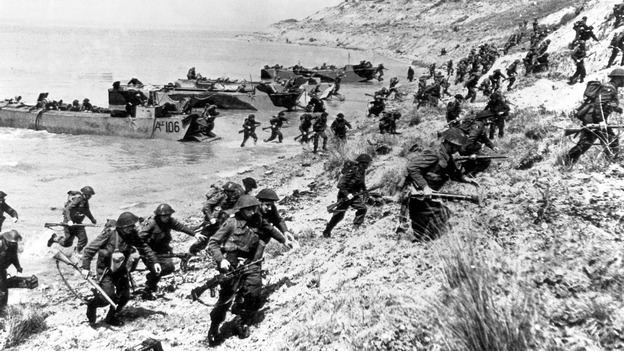
In late 1943, as part of the build-up to D-day, the British government set up a training ground at Slapton Sands, Devon, to be used by Force "U", the American forces tasked with landing on Utah Beach. Slapton Beach was selected for its similarity to Utah Beach: a gravel beach, followed by a strip of land and then a lake. Approximately 3,000 local residents in the area of Slapton, now South Hams District of Devon, were evacuated. Some had never left their villages before being evacuated.
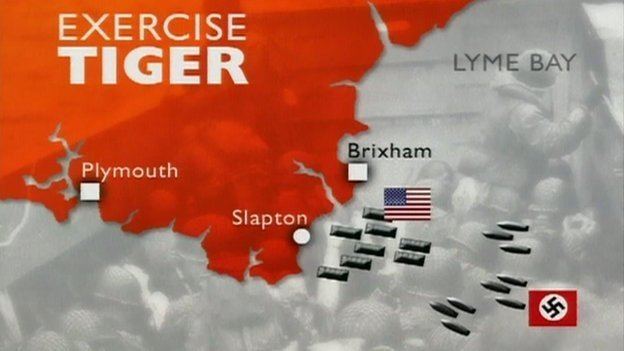
Landing exercises started in December 1943. Exercise Tiger was one of the larger exercises that took place in April and May 1944. The exercise was to last from 22 April until 30 April 1944, and covered all aspects of the invasion, culminating in a beach landing at Slapton Sands. On board nine large tank landing ships (LSTs), the 30,000 troops prepared for their mock landing, which also included a live-firing exercise.
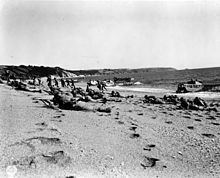
Protection for the exercise area came from the Royal Navy. Two destroyers, three Motor Torpedo Boats and two Motor Gun Boats patrolled the entrance to Lyme Bay and Motor Torpedo Boats watched the Cherbourg area where German E-boats were based.

The first phase of the exercise focused on marshalling and embarkation drills, and lasted from 22 to 25 April. On the evening of 26 April the first wave of assault troops boarded their transports and set off, the plan being to simulate the Channel crossing by taking a roundabout route through Lyme Bay, in order to arrive off Slapton at first light on 27 April.
Friendly fire incident
The first practice assault took place on the morning of 27 April and was marred by an incident involving friendly fire. H-hour was set for 07:30, and was to include live ammunition to acclimatize the troops to the sights, sounds and even smells of a naval bombardment. During the landing itself, live rounds were to be fired over the heads of the incoming troops by forces on land, for the same reason. This followed an order made by General Dwight D. Eisenhower, the Supreme Allied Commander, who felt that the men must be hardened by exposure to real battle conditions. The exercise was to include naval bombardment by ships of Force U Bombardment Group fifty minutes prior to the landing.
Several of the landing ships for that morning were delayed, and the officer in charge, American Admiral Don P. Moon, decided to delay H-hour for 60 minutes, until 08:30. Some of the landing craft did not receive word of the change. Landing on the beach at their original scheduled time, the second wave came under fire, suffering an unknown number of casualties. Rumours circulated along the fleet that as many as 450 men were killed.
Battle of Lyme Bay
On the day after the first practice assaults, early on the morning of 28 April, the exercise was blighted when Convoy T-4, consisting of eight LSTs carrying vehicles and combat engineers of the 1st Engineer Special Brigade, was attacked by nine German E-boats under the command of Korvettenkapitän Bernd Klug, in Lyme Bay.
Of the two ships assigned to protect the convoy, only one was present. HMS Azalea, a corvette was leading the LSTs in a straight line, a formation that later drew criticism since it presented an easy target to the E-boats. The second ship that was supposed to be present, HMS Scimitar, a World War I destroyer, had been in collision with an LST, suffered structural damage and left the convoy to be repaired at Plymouth. Because the LSTs and British naval headquarters were operating on different frequencies, the American forces did not know this. HMS Saladin was dispatched as a replacement, but did not arrive in time to help protect the convoy.
The E-boats had left Cherbourg on patrol the previous evening and did not encounter the Allied patrol lines off Cherbourg or in the English Channel. They spotted the convoy and attacked.
Casualties
The remaining ships and their escort fired back and the E-boats made no more attacks. In total, 749 servicemen (551 United States Army and 198 United States Navy) were killed during Exercise Tiger, whereas only 197 were killed in the actual Utah Beach landing on 6 June. Many servicemen drowned or died of hypothermia in the cold sea while waiting to be rescued. Many were not shown how to put on their lifebelt correctly, and placed it around their waist, the only available spot because of their large backpacks. In some cases this meant that when they jumped into the water the weight of their combat packs flipped them upside down, dragging their heads underwater and drowning them. Dale Rodman, who travelled on LST-507, commented "The worst memory I have is setting off in the lifeboat away from the sinking ship and watching bodies float by." The 248 bodies that were recovered were sent to Brookwood Cemetery in Surrey on 29 April.
Aftermath
As a result of official embarrassment and concerns over possible leaks just prior to the real invasion, all survivors were sworn to secrecy by their superiors. Ten missing officers involved in the exercise had BIGOT-level clearance for D-Day, meaning that they knew the invasion plans and could have compromised the invasion should they have been captured alive. As a result, the invasion was nearly called off until the bodies of all ten victims were found.
There is little information about exactly how individual soldiers and sailors died. The US Department of Defense stated in 1988 that record keeping may have been inadequate aboard some of the ships, and the most pertinent log books were lost at sea. A ninth LST (LST-508) was scheduled to be in the convoy, but was damaged. Author Nigel Lewis speculates that some or all of its infantrymen may have been aboard LST 507 when it went down. Various eyewitness accounts detail hasty treatment of casualties and rumours circulated of unmarked mass graves in Devon fields.
Several changes resulted from mistakes made in Exercise Tiger:
Official histories contain little information about the tragedy. Some commentators have called it a cover-up, but the initial critical secrecy about Tiger may have merely resulted in longer-term quietude. In his book The Forgotten Dead: Why 946 American Servicemen Died Off The Coast Of Devon In 1944 – And The Man Who Discovered Their True Story, published in 1988, Ken Small declares that the event "was never covered up; it was 'conveniently forgotten'". The casualty statistics from Tiger were not released by Supreme Headquarters Allied Expeditionary Force (SHAEF) until August 1944, along with the casualties of the actual D-Day landings. This report stated that there were 442 army dead and 197 navy, for a total of 639. (However, Moon had reported on 30 April that there were 749 dead.) Charles B. MacDonald, author and former deputy chief historian at the U.S. Army Center of Military History, notes that information from the SHAEF press release appeared in the August issue of Stars and Stripes. MacDonald surmises that the press release went largely unnoticed in light of the larger events that were occurring at the time. The story was detailed in at least three books at the end of the war, including Captain Harry C. Butcher's My Three Years With Eisenhower (1946), and in several publications and speeches. Gordon A. Harrison mentioned it in the official Army history Cross-Channel Attack (p. 270) and Samuel Eliot Morison discussed it in his official Navy history, US Naval Operations, vol. 11, p. 66.
Memorials
With little or no support from the American or British armed forces for any venture to recover remains or dedicate a memorial to the incident, Devon resident and civilian Ken Small took on the task of seeking to commemorate the event, after discovering evidence of the aftermath washed up on the shore while beachcombing in the early 1970s.
In 1974, Small bought from the U.S. Government the rights to a submerged tank from the 70th Tank Battalion discovered by his search efforts. In 1984, with the aid of local residents and diving firms, he raised the tank, which now stands as a memorial to the incident. The local authority provided a plinth on the seafront to put the tank on, and erected a plaque in memory of the men killed. Ken Small documents how the local villagers were of more assistance than either the US or UK military officials. Later the American military honoured and supported him, when at the same time the UK military were snubbing his efforts. Small died of cancer in March 2004, a few weeks before the 60th anniversary of the Exercise Tiger incident.
A plaque was erected, in 1995, at Arlington National Cemetery entitled "Exercise Tiger Memorial".
In 2006, the Slapton Sands Memorial Tank Limited (a non-profit organisation, one of whose directors is Small's son Dean) established a more prominent memorial listing the names of all the victims of the attacks on Exercise Tiger. In 2012, a plaque memorialising the tragedy was erected at Utah Beach, Normandy, on the wall of a former German anti-aircraft bunker.
An M4 Sherman tank stands as a memorial to Exercise Tiger at Fort Rodman Park in New Bedford, Massachusetts.
In 1997, the Exercise Tiger Association established a memorial to Exercise Tiger veterans in Mexico, Missouri. It is a 5,000-pound stern anchor from an LST of the Suffolk County Class on permanent loan from the Navy.
